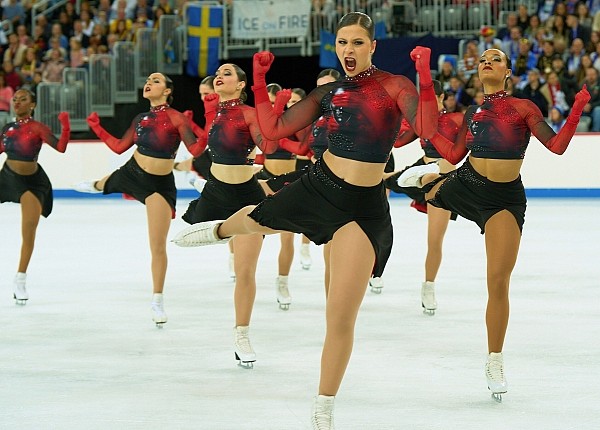Magazine
Biellmann, 40 years of history
Magazine
Biellmann, 40 years of history

The Biellmann is the only spin named after a person. (Credits: Ice Galaxy - 2019)
Also used in synchronized skating, the Biellmann has been named after Denise Biellmann, who made it popular. The Swiss skater was crowned World Champion exactly 40 years ago, in March 1981.

Forty years ago, Denise Biellmann was crowned World Figure Skating champion. It was on March 6, 1981, in Hartford, Connecticut (USA), in front of more than 14,000 spectators.
The Swiss skater has marked the world of figure skating for two reasons. First, she was the first in history to land a triple lutz in competition. Secondly, she gave the name to the famous Biellmann spin and position, well known today to all skaters.
The Swiss skater has marked the world of figure skating for two reasons. First, she was the first in history to land a triple lutz in competition. Secondly, she gave the name to the famous Biellmann spin and position, well known today to all skaters.
By International Skating Union (ISU) rules, the Biellmann is recognizable when "the level of the boot passes the head so that the boot is above and behind or over the head”.
Originally, the Biellmann is an upright spin, a variation of the layback spin. While spinning on one leg, the skater pulls the other leg up and holds the foot extended over and behind the head.
She was not the first person to execute itOriginally, the Biellmann is an upright spin, a variation of the layback spin. While spinning on one leg, the skater pulls the other leg up and holds the foot extended over and behind the head.
If Denise Biellmann made it popular, she was not the first skater to execute this spin or even to invent it. Cecilia Colledge from Great Britain is credited for "having invented the camel spin (including the catch foot variation), as well as the layback spin and possibly, was the first to perform a Biellmann-type spin," wrote the ISU.
The Russian skater Tamara Bratus, who later became a successful pair skater and coach, was also one of the first athletes to perform the spin. She said that gymnasts inspired her.
The Russian skater Tamara Bratus, who later became a successful pair skater and coach, was also one of the first athletes to perform the spin. She said that gymnasts inspired her.

Since its invention, many skaters and synchronized skating teams have added this element to their performance. The Biellmann became very famous and is now a feature for the "degree of difficulty" in the ISU Judging System.
If the Biellmann is the only spin that has the name of a skater, note that the names of the skating jumps all come from their inventor: the axel comes from the Norwegian Axel Paulsen, the salchow from the Swede Ulrich Salchow, the rittberger from the German Werner Rittberger or the lutz from the Austrian Alois Lutz.
If the Biellmann is the only spin that has the name of a skater, note that the names of the skating jumps all come from their inventor: the axel comes from the Norwegian Axel Paulsen, the salchow from the Swede Ulrich Salchow, the rittberger from the German Werner Rittberger or the lutz from the Austrian Alois Lutz.




